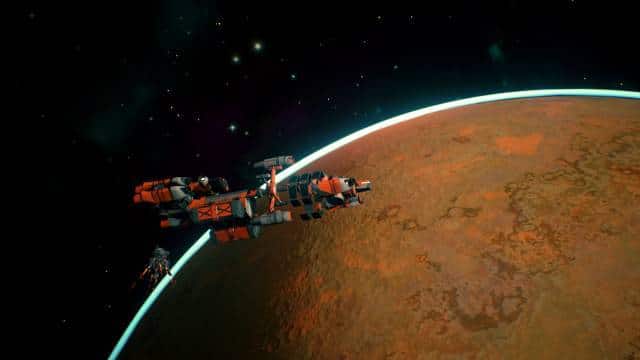After years of scientific and technological development, humanity is now perfectly comfortable with the exploration of the universe. In the journey that will kick off the adventure, however, something goes wrong: after a brief break on Mars to replenish the supplies, the ship finds inexplicably drifting over thirty thousand Parsec from the solar system, due to a jump in the hyperspace ended up badly. Thus begins the long journey home, between a galaxy and the other in the hope of surviving and finally to see in the cosmic horizon the house we call Earth.
The premise, though not original, is really interesting, because The Long Journey Home does everything to make the journey of the unfortunate shipment difficult, perhaps too much.
The first problems appear at the beginning when you have to choose the crew of four who will be on the ship, which can, however, be chosen from a rundown selection, each with its peculiarities (with as much lander as detailed as we will see ).
Each character has a role of the most classic as the physician, engineer, pilot, but also more extravagant tasks such as university scientific blogger. Each crew member also has a different character, which affects relationships with other members, as well as resistance to peculiar physical and psychological traumas.
If a young astronaut is more stoic to the Rockclad landings and will hardly suffer various and possible fractures, but will be more susceptible to psychological trauma due to his little experience, the old engineer will have less effort to withstand a shock, but his body will be much more fragile. The problem ofThe Long Journey Home is that, although it incorporates all these very interesting dynamics, it does nothing to introduce it to the player in the most appropriate way.
The same applies to the operation of the ship, which, of course, must be checked in all its aspects. Fuel, hull strength, number of “hypersalts” available, maintenance of fire guns, these are some of the parameters that the player will always have to deal with.
The same (excluding jumps in hyperspace and weapons) are also transposed into the lander, the landing module with which you explore the planets in search of resources, information or artifacts. The spaceship and lander can be picked up, as we said, at the beginning of the game, so we plan a minimum of strategy.
There are smaller vessels for mineral deposits (which can repel fuel, or solidify the hull) and various resources between artifacts and strange plants, while others are more suited to travel or combat. Same talk for landers, also more or less suited to different climatic situations, or more resistant to others in the case of landings of luck, for example. No one can see you playing over the space
To make things even more complicated, the galaxies generated by procedure are also made, a game design element that I admit I do not particularly appreciate.
This means that, during the first games, we are facing the blind side of The Long Journey Homebecause all of the information we have mentioned (as many as others relating to the environment, but also to the spread of minerals, for example) can only be discovered playing. You can find yourself safely without fuel in the early galaxies for example, witnessing the slow and inexorable death of the crew due to the malfunctioning of the vessel’s vital systems.
In a run I happened to explode the lander after another landing on a planet with the senseless gravity. In that case I managed to recover the project to build a new one, but none of my crew members was able to do so, so I had to look for some alien capable of doing it. Traveling on the fuel started to fall short, to get it again I needed minerals I could not pick up without the lander, and I could not even buy it from a merchant because I had no money and nothing to sell … and in the end I had no choice but start a new game.

